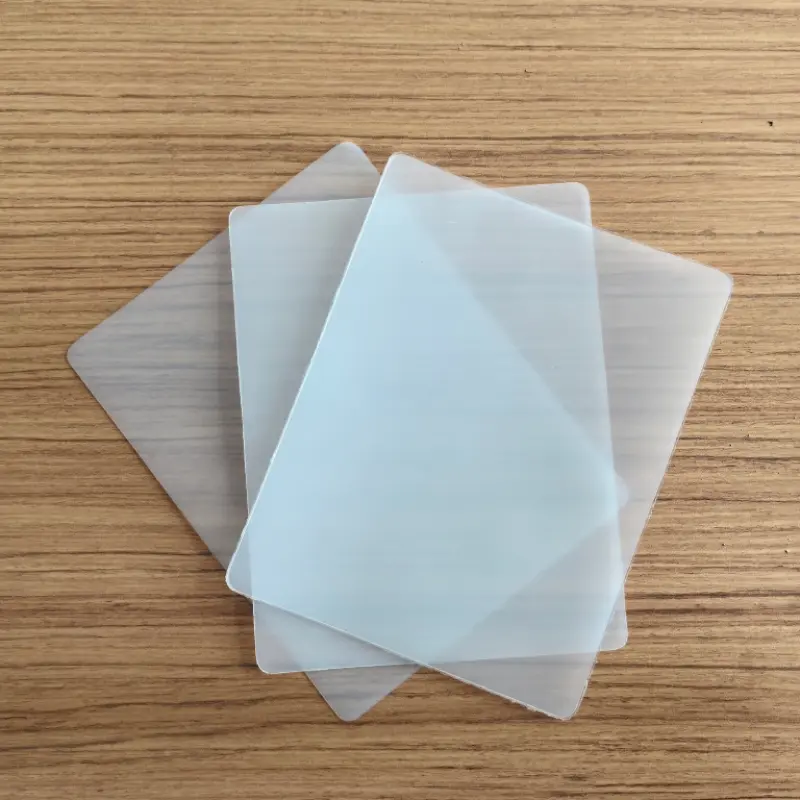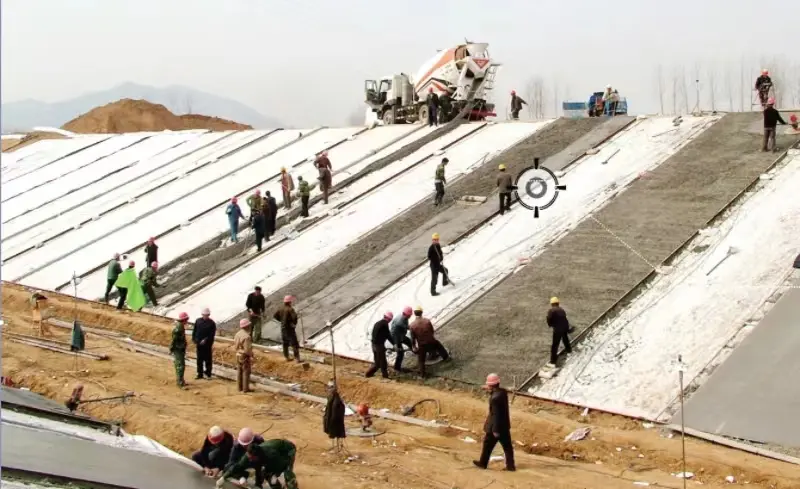What is white geomembrane

White geomembrane is mostly LDPE or LLDPE geomembrane, which is commonly known as low-density polyethylene geomembrane. It differs from black geomembrane mainly in performance and density; black geomembrane is generally used for seepage prevention in geotechnical engineering, while white geomembrane is mainly used for thin film products. In addition, the density of black geomembrane is greater than that of white geomembrane.
The reason why white geomembrane is white is because white masterbatch particles are added during production, and adding white masterbatch particles does not affect the quality of the geomembrane. Black geomembrane is mostly HDPE geomembrane (high-density polyethylene geomembrane), so its performance is higher than that of white LDPE geomembrane.
White geomembrane also has excellent resistance to environmental stress cracking, low temperature resistance, aging resistance, corrosion resistance, a relatively large temperature range (-60—+60), and a longer service life. Its functional role in use is basically the same as that of black geomembrane. If used underground in engineering, there is generally not much difference between white geomembrane and black geomembrane; but if exposed outdoors, black geomembrane is more durable than white geomembrane because sunlight cannot penetrate black geomembrane, while sunlight can penetrate white geomembrane, causing premature oxidation of the white geomembrane and shortening its service life.
The main uses of white LDPE geomembrane

Some common uses of white LDPE geomembranes include:
1,spills or sewage overflow, avoids environmental pollution, and protects land and water sources.
2,Shade and insulation: In extreme weather conditions, covering white geomembrane for shading and insulation helps alleviate the adverse effects of meteorological changes on crops.
3,Increased yield: Through geomembrane enclosure management, soil temperature and humidity are increased, helping crops better utilize fertilizers, water, and nutrients to achieve increased production goals.
4,Pest and disease control: White geomembranes containing biodegradable substances can inhibit the breeding of pathogens and insects, prevent pest and disease outbreaks, and reduce pesticide use.
5,Land restoration: When land quality declines, laying white geomembrane to improve soil structure and quality helps land restoration and rehabilitation.
6,Agricultural irrigation: Used to control the flow of irrigation water, avoiding water waste and soil erosion.
7,Mining and landfill seepage control projects: Used in seepage control projects in mining tailings ponds, piles, desulfurized gypsum yards, urban landfills, and other locations to effectively control pollutants.
8,Sewage treatment plants: Play a crucial role in sewage treatment processes, used in pretreatment systems to filter water quality.
9,Soil isolation: Used to isolate soils or liquids of different properties, preventing mutual influence between different soil layers.
10,Strengthening and reinforcement: Used for roadbed reinforcement, slope reinforcement, embankment reinforcement, etc., to enhance the strength and stability of the soil.
Overall, white LDPE geomembranes offer versatile and cost-effective solutions for a wide range of applications in civil engineering, environmental protection, agriculture, aquaculture, and landscaping, contributing to sustainable development and infrastructure resilience.
The factors affecting the price of geomembranes
1, Raw materials:
Geomembrane materials are divided into recycled materials and virgin materials. Recycled materials are generally cheaper than virgin materials. The raw material for geomembranes is high-density polyethylene, and the price of high-density polyethylene is a major factor affecting the price of geomembranes.
2, Thickness:
The thickness of the geomembrane also affects its price. Different thicknesses naturally result in different prices, as thicker geomembranes require more raw materials, thus leading to higher prices.
3,Standards:
Geomembrane standards vary based on the specific nature of the project. Standards can be non-standard, national standard, or municipal construction standard. Different standards correspond to different prices, making standards an important factor influencing geomembrane prices.
4, Customer demand:
Just as sellers may offer discounts for larger purchases, the price of geomembranes may decrease with larger quantities ordered.
5, Transportation:
Transportation costs depend on whether the customer has their own transportation or relies on the manufacturer's delivery service. Distance also affects transportation costs, with longer distances resulting in higher fees. Some manufacturers offer free delivery, but this cost may be included in the product price. Therefore, transportation considerations can impact prices.
6, Manufacturer brand:
Prices vary among different manufacturers and brands. Generally, products from reputable brands tend to be more expensive, but they often come with quality assurance and excellent sales and after-sales services.
These are the factors influencing the price of geomembranes. When choosing geomembranes, it's important to consider factors beyond price alone, as the quality of geomembranes is a crucial factor in determining the quality of construction. Therefore, it's advisable to choose geomembranes with high cost-effectiveness.
FAQ
1, What are the primary applications of white LDPE geomembrane?
White LDPE geomembrane is primarily used for leakage prevention, shade and insulation, increasing yield in agriculture, pest and disease control, and aiding in soil restoration.
2, How does white LDPE geomembrane contribute to agriculture?
By enclosing and managing soil, white LDPE geomembrane helps in increasing soil temperature and humidity, thus facilitating better utilization of fertilizers, water, and nutrients, ultimately leading to increased crop yields.
3, What role does white LDPE geomembrane play in environmental protection?
White LDPE geomembrane effectively prevents moisture loss, blocks chemical spills or sewage overflow, and inhibits the breeding of pathogens and insects, thereby preventing environmental pollution and protecting land and water sources.
4, How does the thickness of white LDPE geomembrane affect its performance?
The thickness of white LDPE geomembrane impacts its performance, as thicker geomembranes provide better protection against seepage and mechanical damage, while thinner ones may be more suitable for specific applications where flexibility is crucial.
5, How does the choice of standards impact the selection of white LDPE geomembrane?
The choice of standards, whether non-standard, national standard, or municipal construction standard, influences the quality and suitability of white LDPE geomembrane for specific projects, thereby affecting its performance and longevity.
574.webp)
503.webp)
759.webp)
585.webp)
523.webp)